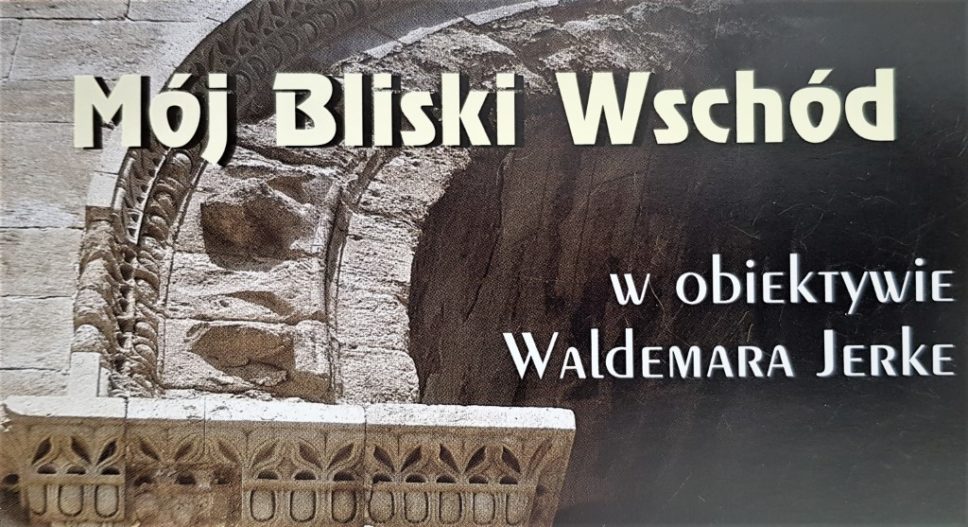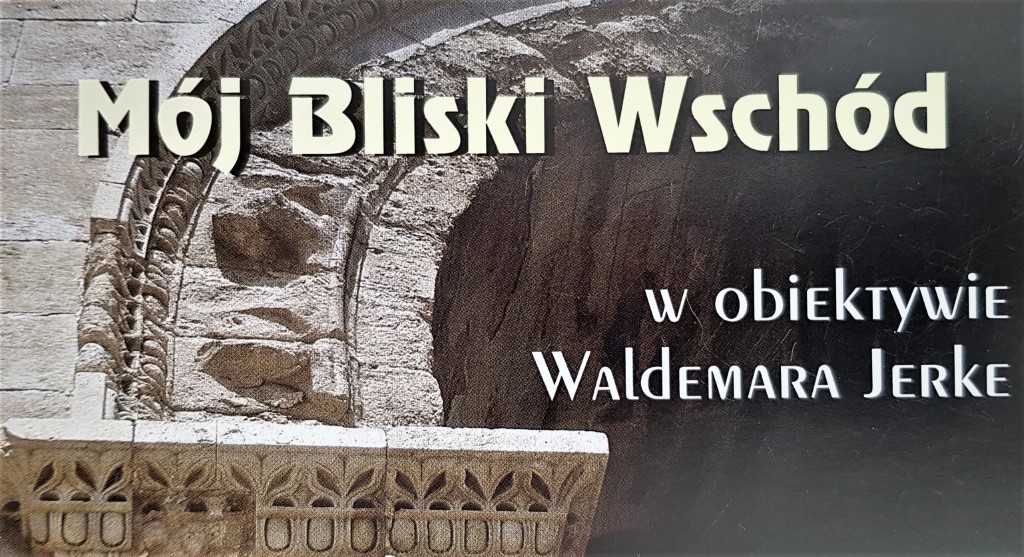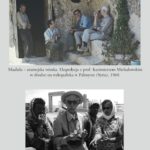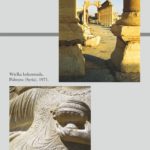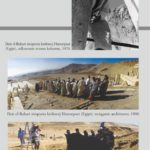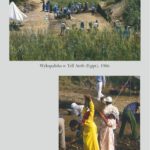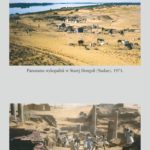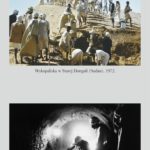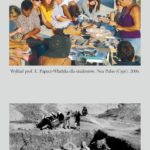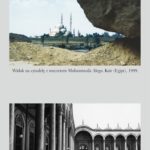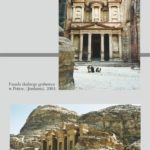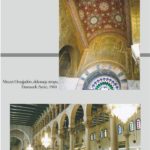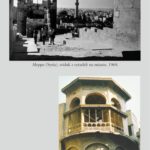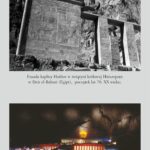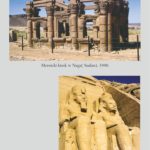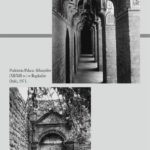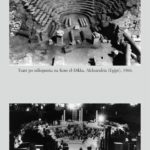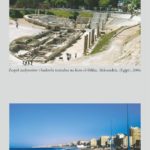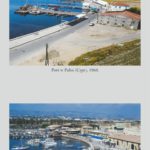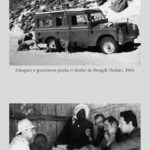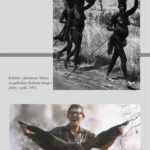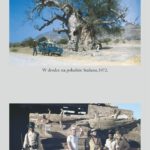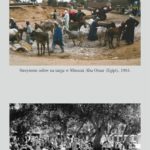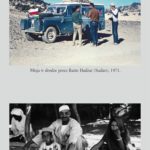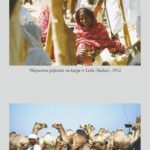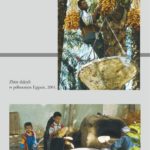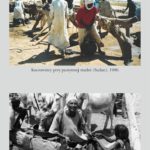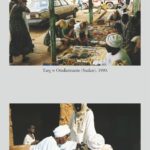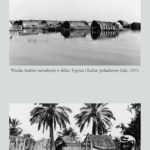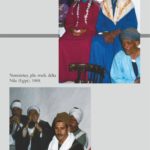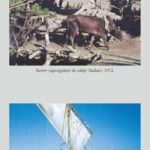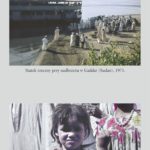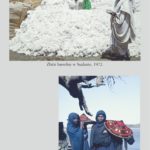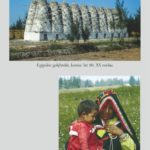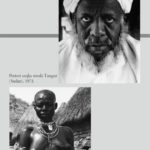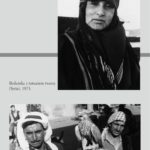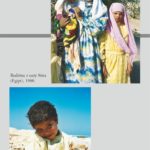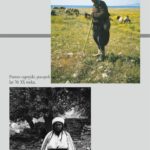We bring you another past exhibition related to the work of the Polish Centre of Mediterranean Archaeology of the University of Warsaw. It is “My Middle East”, a collection of photographic impressions by photographer Waldemar Jerke, who has been working for several decades at the PCMA. The exhibition was presented several times in 2007–2012.
As PCMA UW photographer, Waldemar Jerke visited most of the major archaeological sites investigated by the PCMA UW expeditions. He worked, among others in Alexandria and Deir el-Bahari (Egypt), Palmyra (Syria), Nimrud (Iraq), Nea Paphos (Cyprus), and Old Dongola (Sudan). At that time, photographers faced completely different challenges, unknown to those who are working in the era of digital photography. But excavations provided Jerke also with an opportunity to capture scenes from the daily life of both the archaeological expeditions and the people they encountered and lived among. The exhibition shows fragments of this everyday life, photographed from the end of the 1960s until the beginning of the 21st millennium.
From the exhibition folder
Introduction by Prof. Michał Gawlikowski:
“Waldek Jerke began his archaeological career in 1961 as a photographer of the then Chair of Mediterranean Archeology of the University of Warsaw. He immediately joined the quite rich social life of his peers – the students, among whom I was also included. A few years later, we started to meet not only in Krakowskie Przedmieście, but also on excavations. Waldek documented my first independent research in Palmyra, later he spent many years in Egypt, but he also visited Sudan, Syria, Iraq, and Cyprus.
When he was about to leave for Egypt for the first time, our common master, Kazimierz Michałowski, set him a trial task: he was to photograph mud on a Warsaw street. The test went well. Since then, thousands of Jerke’s photographs show just as clearly, both, the sometimes inconspicuous, details of archeological everyday life, the objects of art excavated from the ground, and the great buildings of antiquity. They also portray, with understanding and sensitivity, the people who worked with us. This exhibition contains a small sample of my friend’s talent. For almost half a century he contributed greatly to the successes, and shred the difficulties, and joys of several generations of Mediterranean archaeologists.”
Waldek Jerke on his work:
“It was 1961. I graduated from the Phototechnical School in Warsaw and received a photographer’s diploma with a specialization in technical photography. I started looking for a job and, by a lucky coincidence, I received an offer from Professor Kazimierz Michałowski. I was to become a photographer at the then Chair of Mediterranean Archeology of the University of Warsaw.
On the one hand, working at the University of Warsaw with a famous archaeologist was a distinction for a newly-minted photographer and a promise of exotic journeys with Polish archaeological expeditions. But on the other, it initially consisted of the, rather mundane, preparation of teaching aids and sometimes, as if for a treat, photographing original monuments ancient art, located in Polish museums. Only after years of such work and a positive assessment of my skills, the Professor offered me a trip to our Cairo Station as a photographer documenting the field work of our archaeologists in the Middle East.
I was extremely happy and curious about how I would do in the field, how I would endure the heat and difficult conditions. The tremendous effect was the fact that among my predecessors in this role there were some great photographers, whom I now had to match. ‘I had to work at the station for two years, I have stayed to this day. I have worked with our archaeologists but also collaborated with many foreign expeditions. I have fond memories of cooperation with Germans, Belgians, and Egyptians. These 45 years have resulted in the collection of about 5,000 slides and negatives in my private library, which are a testimony of my work, in which my faithful friend – a camera – accompanied me. Thanks to it, I was able to capture the situations that I would like to show at least partially in a modest exhibition of about 65 photograms. I can implement it thanks to the favor and acceptance of the authorities of the University of Warsaw, and thanks to my supervisor – prof. Piotr Bieliński.”
-
1. (Góra) Maalula — aramejska wioska. Ekspedycja z prof. Kazimierzem Michałowskim w drodze na wykopaliska w Palmyrze (Syria), 1969. (Dół) Prof. Kazimierz Michałowski w Palmyrze (Syria), 1969. // (Top) Maalula – an Aramaic village. Expedition with Prof. Kazimierz Michałowski on their way to the excavations in Palmyra (Syria), 1969. (Bottom) Prof. Kazimierz Michałowski in Palmyra (Syria), 1969.
-
2. (Góra) Wielka kolumnada, Palmyra (Syria), 1971. (Dół) Posąg Alaine, detal, Palmyra (Syria), 1971. // (Top) The Great Colonnade, Palmyra (Syria), 1971. (Bottom) Alaine statue, detail, Palmyra (Syria), 1971.
-
3. (Góra) Wykopaliska w Tell Atrib (Egipt), 1986. (Dół) Tell Atrib (Egipt) wynoszenie ziemi, 1986. // (Top) Excavation at Tell Atrib (Egypt), 1986. (Bottom) Tell Atrib (Egypt) removal of spoil, 1986.
-
4. (Góra) Panorama wykopalisk w Starej Dongoli (Sudan), 1973. (Dół) Wykopaliska w Kościele na Planie Krzyża w Starej Dongoli (Sudan), 1970. // (Top) Panorama of the excavations in Old Dongola (Sudan), 1973. (Bottom) Excavations in the Church of the Plan of the Cross in Old Dongola (Sudan), 1970.
-
5. (Góra) Wykopaliska w Starej Dongoli (Sudan), 1972. (Dół) Badania w podziemiach meczetu w Starej Dongoli (Sudan), 1969. // (Top) Excavations in Old Dongola (Sudan), 1972. (Bottom) Exploration in the basement of the mosque in Old Dongola (Sudan), 1969.
-
6. (Góra) Wykład prof. E. Papuci-Władyka dla studentów, Nea Pafos (Cypr), 2006. (Dół) Wykopaliska w pałacu Asurnasirpala II (883 859 p.n.e.) w Kalchu, stolicy państwa późnoasyryjskiego, obecnie Tell Nimrud (Irak), 1971. // (Top) Lecture by prof. E. Papuci-Władyka for students, Nea Paphos (Cyprus), 2006. (Bottom) Excavations at the Asurnasirpal II Palace (883 859 BC) in Kalchu, the capital of the Late Assyrian state, now Tell Nimrud (Iraq), 1971.
-
7. (Góra) Widok na cytadelę z meczetem Mohammeda Alego, Kair (Egipt), 1999. (Dół) Dziedziniec meczetu Mohammeda Alego, Kair (Egipt), koniec lat 60. XX wieku. // (Top) View of the citadel with Mohammed Ali Mosque, Cairo (Egypt), 1999. (Bottom) Mohammed Ali Mosque Courtyard, Cairo (Egypt), late 1960s.
-
8. (Góra) Panorama Deir el-Bahari (Egipt) ze Świątynią królowej Hatszepsut, początek lat 70. XX wieku. (Dół) Awaryjne lądowanie balonu z turystami na dziedzińcu przed świątynią królowej Hatszepsut, koniec lat 90. XX wieku. // (Top) Panorama of Deir el-Bahari (Egypt) with the Temple of Queen Hatshepsut, early 1970s. (Bottom) Emergency landing of a balloon with tourists in the courtyard in front of the temple of Queen Hatshepsut, late 1990s.
-
9. (Góra i dół) Fasada skalnego grobowca w Petrze, (Jordania), 2003. // (Top and bottom) Facade of a rock tomb in Petra, (Jordan), 2003.
-
10. (Góra) Meczet Omajadów, dekoracja stropu, Damaszek (Syria), 1969. (Dół) Wnętrze meczetu Omajadów, Damaszek (Syria), 1969. // (Top) Omayad Mosque, ceiling decoration, Damascus (Syria), 1969. (Bottom) Interior of the Omayad Mosque, Damascus (Syria), 1969.
-
11. (Góra) Aleppo (Syria), widok z cytadeli na miasto, 1969. (Dół) Sabil, Stary Kair (Egipt), 1982. // (Top) Aleppo (Syria), view of the city from the citadel, 1969. (Bottom) Sabil, Old Cairo (Egypt), 1982.
-
12. (Góra) Fasada kaplicy Hathor w świątyni królowej Hatszepsut w Deir el-Bahari (Egipt), początek lat 70. XX wieku. (Dół) Iluminowana świątynia królowej Hatszepsut (Egipt), 1997. // (Top) The facade of the Hathor Chapel in the temple of Queen Hatshepsut in Deir el-Bahari (Egypt), early 1970s. (Bottom) Illuminated Temple of Queen Hatshepsut (Egypt), 1997.
-
13. (Góra) Meroicki kiosk w Naga (Sudan), 1990. (Dół) Fasada świątyni Ramzesa II w Abu Simbel (Egipt), fragment, 1989. // (Top) Meroitic kiosk in Naga (Sudan), 1990. (Bottom) Facade of the Temple of Ramses II in Abu Simbel (Egypt), fragment, 1989.
-
14. (Góra) Podcienia Pałacu Abbasydów (XII/XIII w.) w Bagdadzie (Irak), 1971. (Dół) Wejście do sanktuarium sekty jezydów (północny Irak), 1971. // (Top) Arcades of the Abbasid Palace (12th / 13th century) in Baghdad (Iraq), 1971. (Bottom) Entrance to a Yezidi sanctuary (northern Iraq), 1971.
-
15. Góra) Teatr po odkopaniu na Kom el-Dikka, Aleksandria (Egipt), 1966. (Dół) Przedstawienie w zrekonstruowanym teatrze, Aleksandria (Egipt), początek lat 70. XX wieku. // (Top) Theater after excavation on Kom el-Dikka, Alexandria (Egypt), 1966. (Bottom) Performance in a reconstructed theater, Alexandria (Egypt), early 1970s.
-
16. (Góra) Zespół audytoriów i budowla teatralna na Kom el-Dikka, Aleksandria, (Egipt), 2006. (Dół) Nadbrzeże w Aleksandrii (Egipt), 2006. // (Top) Auditorium and theater building on Kom el-Dikka, Alexandria, (Egypt), 2006. (Bottom) The corniche in Alexandria (Egypt), 2006.
-
17. Port w Pafos (Cypr), w 1968 (góra) i 2006 roku (dół) // Port of Paphos (Cyprus),In 1968 (top) and in 2006 (bottom).
-
18. (Góra) Zakopani w pustynnym piasku w drodze do Dongoli (Sudan), 1969. (Dół) Śniadanie w drodze do Dongoli (Sudan), 1970. // (Top) Stuck in the desert sand on the way to Dongola (Sudan), 1969. (Bottom) Breakfast on the way to Dongola (Sudan), 1970.
-
19. (Góra) Kobiety z plemienia Morro na południu Sudanu niosące plony z pola, 1972. (Dół) Płonąca sawanna (Sudan), 1972. // (Top) Morro women in southern Sudan carrying crops from the field, 1972. (Bottom) Burning savannah (Sudan), 1972.
-
20. (Góra) W drodze na południe Sudanu, 1972. (Dół) Posterunek policji w Wadi Halfa (Sudan), 1972. // (Top) On the way to south of Sudan, 1972. (Bottom) Wadi Halfa police station (Sudan), 1972.
-
21. (Góra) Strzyżenie osłów na targu w Minszat Abu Omar (Egipt), 1983. (Dół) Suk w Tangasi (Sudan), 1973. // (Top) Donkey shearing at the market in Minshat Abu Omar (Egypt), 1983. (Bottom) Souk in Tangasi (Sudan), 1973.
-
22. (Góra) Misja w drodze przez Batin Hadżar (Sudan), 1971. (Dół) Przydrożna herbaciarnia (Sudan), 1974. // (Top) The expedition en route through Batin Hajar (Sudan), 1971. (Bottom) Roadside teahouse (Sudan), 1974.
-
23. (Góra) Miejscowa piękność na targu w Letti (Sudan), 1972. (Dół) Targ wielbłądów w Abu Roasz koło Kairu (Egipt), 2000. // (Top) A local beauty at the Letti market (Sudan), 1972. (Bottom) The Abu Roash camel market, near Cairo (Egypt), 2000
-
24. (Góra) Zbiór daktyli w północnym Egipcie, 2001. (Dół) Wypiek chleba w wiosce koło Kairu (Egipt), 2001. // (Top) Date collection in North Egypt, 2001. (Bottom) Baking bread in a village near Cairo (Egypt), 2001.
-
25. (Góra) Koczownicy przy pustynnej studni (Sudan), 1990. (Dół) Napełnianie skórzanych bukłaków wodą (Sudan), 1990. // (Top) Nomads at a desert well (Sudan), 1990. (Bottom) Filling leather water bags (Sudan), 1990.
-
26. (Góra) Targ w Omdurmanie (Sudan), 1990. (Dół) Pustynny szpital (Sudan), 1990. // (Top) Market in Omdurman (Sudan), 1990. (Bottom) A desert hospital (Sudan), 1990.
-
27. (Góra i dół) Wioska Arabów nawodnych w delcie Tygrysu i Eufratu (południowy Irak), 1971. // (Top and bottom) A village of Marsh Arabs in the Tigris and Euphrates Delta (southern Iraq), 1971.
-
28. (Góra) Nowożeńcy, płn.-wsch. Delta Nilu (Egipt), 1989. (Dół) Orkiestra weselna (Egipt), 1989. // (Top) Newlyweds, north-east Nile Delta (Egypt), 1989. (Bottom) A wedding orchestra (Egypt), 1989.
-
29. (Góra) Krowy zaprzęgnięte do sakiji (Sudan), 1972. (Dół) Feluka na Nilu (Sudan), 1974. // (Top) Cows harnessed to a water-wheel (sakiya) (Sudan), 1972. (Bottom) A feluka on the Nile (Sudan), 1974.
-
30. (Góra) Statek rzeczny przy nadbrzeżu w Gaddar (Sudan), 1971. (Dół) Dziewczynka z wioski Abu Roasz koło Kairu (Egipt), 1969. // (Top) River boat at the wharf in Gaddar (Sudan), 1971. (Bottom) A girl from the village of Abu Roash near Cairo (Egypt), 1969.
-
31. (Góra) Zbiór bawełny w Sudanie, 1972. (Dół) Kobiety z wioski Chandak (Sudan), 1972. // (Top) Cotton harvest in Sudan, 1972. (Bottom) Women from the Chandak village (Sudan), 1972.
-
32. Egipskie gołębniki, koniec lat 80. XX. wieku. (Dół) Beduinka karmiąca dziecko (Egipt), początek lat 80. XX. wieku. // Egyptian dovecots, late 1980s. (Bottom) A Bedouin feeding a child (Egypt), early 1980s.
-
33. (Góra) Portret szejka wioski Tangasi (Sudan), 1973. (Dół) Dziewczyna z plemienia Morro (Sudan), 1972. // (Top) Portrait of the sheikh of Tangasi village (Sudan), 1973. (Bottom) A girl from the Morro tribe (Sudan), 1972.
-
34. (Góra) Beduinka z tatuażem twarzy (Syria), 1973. (Dół) Polowanie z sokołem na pustyni (Syria), 1973. // (Top) A Bedouin with a face tattoo (Syria), 1973. (Bottom) Hunting with falcons in the desert (Syria), 1973.
-
35. (Góra) Rodzina z oazy Siwa (Egipt), 1980. (Dół) Egipski uczeń, 1979. // (Top) A family from the oasis of Siwa (Egypt), 1980. (Bottom) An Egyptian schoolboy, 1979.
-
36. (Góra) Pasterz cypryjski, początek lat 70. XX. wieku. (Dół) Kapłan z sanktuarium jezydów w północnym Iraku, 1971. // (Top) A Cypriot shepherd, early 1970s. (Bottom) A priest from a Yazidi shrine in northern Iraq, 1971.

